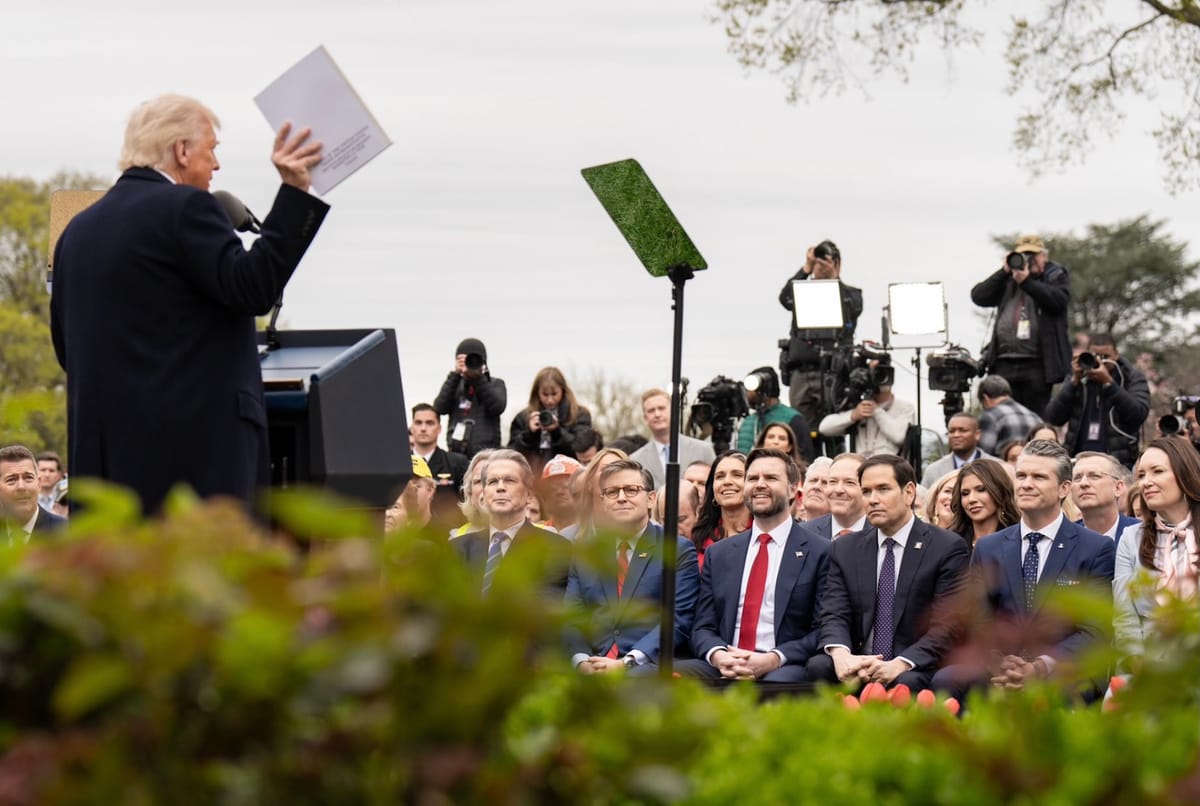

A New Era of Trade Policy
Vice President JD Vance, in an interview on April 2, celebrated President Trump’s 'Liberation Day' tariffs as a historic shift, marking the first time in 40 years the U.S. has refused to be the world’s 'piggy bank.' Announced on April 2, the tariffs impose duties as high as 50 percent, aiming to address a $1.2 trillion trade deficit in goods from 2024. Vance emphasized that these measures protect American industries by leveling the playing field against countries that have long exploited U.S. markets.
The policy, detailed in a White House event titled 'Make America Wealthy Again,' reflects a commitment to economic independence. Social Media posts echoed Vance’s enthusiasm, framing the tariffs as a victory for American workers and a step toward self-reliance.
Ending Decades of Exploitation
Vance highlighted how nations have imposed tariffs and non-tariff barriers on U.S. goods for decades, with the EU averaging 4.2 percent and China 7.3 percent on American exports. In contrast, the U.S. maintains a low 2.5 percent average tariff, one of the world’s lowest, allowing foreign competitors to flood markets with cheaper goods. The new tariffs—25 percent on Canada and Mexico, 20 percent on the EU—aim to match these rates, ensuring fair competition for U.S. businesses.
This reciprocity empowers American producers to compete without government handouts, aligning with free market principles. Vance’s remarks underscore a policy that prioritizes market fairness over bureaucratic expansion.
Protecting Key Industries
The Liberation Day tariffs target specific sectors to bolster domestic production, with 25 percent duties on steel and aluminum from Canada and Mexico, and 20 percent on EU goods like whiskey and motorcycles. U.S. exports, totaling $1.9 trillion in 2024, were dwarfed by $3.1 trillion in imports, a gap the tariffs seek to narrow.
By shielding industries like steel, which supports 80,000 American jobs, the policy fosters self-sufficiency. This approach reflects fiscal responsibility by strengthening the economic base through trade, not subsidies.
A History of Tariff Success
Vance pointed to Trump’s first-term tariffs as proof of their effectiveness, noting the 2018 duties on steel and aluminum that prompted Mexico to secure its border in 2019. The current tariffs build on that legacy, with 10 percent rates on Canadian energy and 25 percent on Mexican goods, pressuring both nations to address trade disparities. The EU’s 20 percent tariff, affecting $6 billion in U.S. exports, aims to balance trade flows.
This strategy leverages tariffs as a tool for negotiation, ensuring U.S. businesses aren’t undercut by unfair practices. It’s a lean method that avoids government overreach, letting market dynamics drive outcomes.
Empowering American Workers
Vance’s interview underscored the tariffs’ role in empowering American workers, particularly in manufacturing hubs hit hard by trade imbalances. The U.S. exported $148 billion to China in 2024, against $444 billion in imports, a gap that has cost jobs in states like Ohio, Vance’s home. The new tariffs aim to bring production back to American soil, supporting industries like automotive and agriculture.
By prioritizing domestic production, the policy enhances individual liberty for workers, allowing them to thrive without reliance on foreign supply chains. Social Media posts noted this as a win for the heartland, where jobs are a lifeline.
A Blueprint for Economic Strength
The Liberation Day tariffs, affecting over $380 billion in trade, position the U.S. as a leader in redefining commerce. Vance’s remarks on April 2 highlighted the administration’s goal to make the U.S. a producer, not a consumer, of global goods. The policy’s focus on reciprocity ensures American businesses can compete on equal terms, a principle Vance called ‘long overdue.’
This framework, rooted in economic independence, sets a model for future trade policy. By encouraging fair trade without government expansion, Trump and Vance are paving the way for a stronger, more self-reliant America.
Dues are $12 per year. Member benefits:
✅ Ad-Free Website Viewing
✅ Advocacy for Republican Seniors
✅ 120+ Senior Discounts
✅ Member Only Newsletters